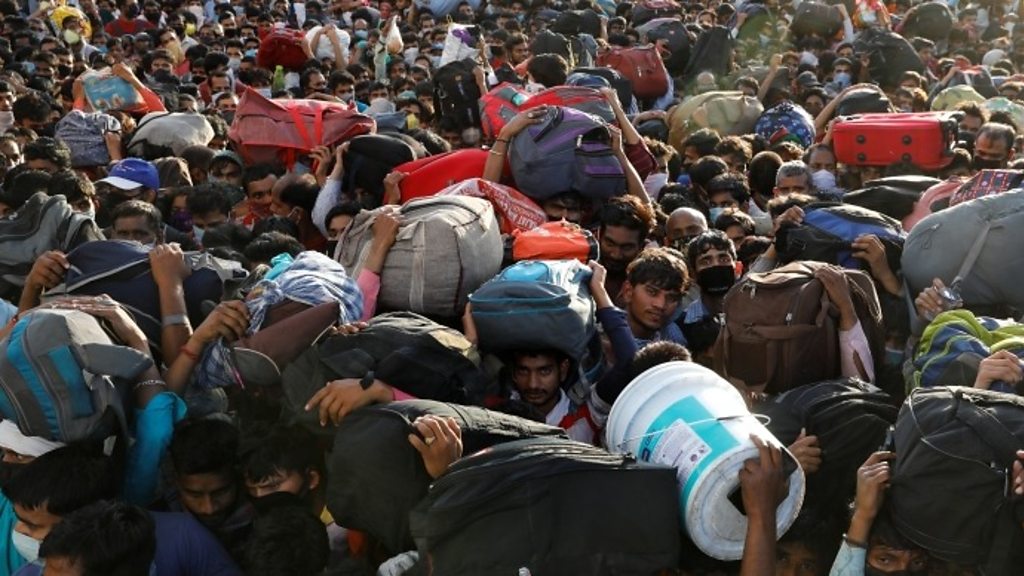
Mr. Muliyadi limp out of starvation, lays in front of one of the biggest malls centered in the city of Jakarta; Indonesia’s capital. Like many other low-income workers put out of job due to the strict lockdown enforced by the Indonesian government as a response to the rising Covid-19 cases, he struggles to find means of managing his basic needs, this includes necessities such as food. Around the world global leaders still struggle and juggle their options making the hard choice between mandatory lockdowns or the slow reopening of their economies. Sadly, just like Mr. Mulyadi and other people like him, there is a real, and a much more concerning vision of lockdowns that some wealthier countries may not be seeing.
As we continue into the pandemic, we begin to see that more and more countries fight with two prominent options: enter a strict lockdown or, reopening the economy and allowing workers to get back to their jobs. Lockdowns, while proven to reduce the amount of cases and deaths related to Covid-19, has another impact to communities in countries that, even before the global pandemic, struggled to find any real income. Places such as Nepal, Indonesia, Afghanistan and other poor South Asian and Middle Eastern countries have communities that are starving to death as they wait for lockdowns to end in their cities.

According to a survey conducted by the experts from the University of Pennsylvania, University of Chicago and Mumbai based CIME on per-capita household earnings, currently in India, 85% of households are already seeing a decrease of income since a lockdown was put in place. Households found in the lowest income groups made at most for Rs. 12,374 to Rs. 3,800 (about $1370 – $50) monthly per capital. It’s even worse for rural communities who have seen an 89% of households face a reduction in income compared to urban households, which still has seen around 75% of households lose portions of their incomes. These statistics can be easily reflected on other poor Asian countries and it’s even worse for places that rely on a workforce that is primarily based in rural locations who are unable to sustain or switch to an online alternative.
Just from that one example, it’s quite easy to distinguish some core issues that may not be relevant to richer communities that reside in places such as the US and the EU. A great example of a core issue lies in lack of money. Because of countries such as India, where work force is primarily reliant on a daily income and are based in jobs such as agriculture, manufacturing and retail; jobs that have almost 0 online alternatives, it leaves, on average, more than half of most developing countries’ working population unemployed. While some countries are able to provide government provided benefits, places such as Yemen, Sri Lanka, Iran, Pakistan and Thai Land and many more countries who have entered the pandemic with fragile economies, are at a place where stay at home benefits are almost impossible to sum up and provide to their citizens.

On March 27th, US President Donald Trump signed a stimulus package worth 2.2 trillion dollars, around 11% of its GDP (gross domestic product). With the US retaining the title of having the largest economy in the world, 2.2 trillion is just scraping what the US would actually be able to provide. With one of the smallest stimulus packages held by Mexico of 26 billion, even though under much critic as it is predicted to have little to no impact, it’s still a massive portion of money compared to countries such as Ice-land, Nepal and Liberia all with GDPs smaller than Mexico’s stimulus package. With limited resources countries with little to no money to spare, countries will be unable to help their citizens without completely breaking their economies and going into complete chaos. With the inability to provide any help to citizens, poorer countries have been hit the hardest with some citizens from Liberia fleeing to their native farms in fear of starvation in main cities. With no benefits or jobs, how will people that rely on a daily income survive in a mandatory lockdown that is, supposed to, keep them safe?
The difference between the problems being presented in these poorer countries compared to western superpowers such as the US and UK is the amount of resources that the country is able to access and provide. With places such as Yemen, already war torn and a health system that is at the verge of snapping, there is no way residences would be able to sustain themselves if they were to catch Covid 19. Compared with places such as Norway with universal health care and 13 billion dollars being accessed to start and recover from the economic backlashes, things seem a lot of more certain then the dark future that may lie ahead for countries which economies are still trying to grasp for air. Lower class countries that are already struggling to compete in the modern era of technology and rely on a day to day income are going to be hit the hardest as even if a lockdown was put in place, are they keeping away from catching the virus, or slowly starving in their own homes.
To conclude, realities like these are not seen in countries with plentiful amount of resources. Even though the organizations like the UN are still trying to help with issues such as refugee management and peace keeping, it is a time like now to help those who are struggling to even put food on the table. Places such as Singapore that are able to provide government provided housing and a budget to lower incomes workers, will people without that support just be left to die?
Works Cited
Cummings, Mike. “Measuring the Effects of Lockdowns in India and Nepal.” YaleNews, 4 May 2020, news.yale.edu/2020/05/04/measuring-effects-lockdowns-india-and-nepal. Accessed 2 July 2020.
Research, et al. “How the COVID-19 Lockdown Is Affecting India’s Households.” Knowledge@Wharton, 9 June 2020, knowledge.wharton.upenn.edu/article/covid-19-lockdown-affecting-indias-households/.
Sales, Jordi. “COVID-19: How Asia-Pacific Is Emerging from Lockdown.” World Economic Forum, 7 May 2020, www.weforum.org/agenda/2020/05/covid-19-asia-pacific-ending-lockdown/.
Wikipedia Contributors. “List of Countries by GDP (Nominal).” Wikipedia, Wikimedia Foundation, 28 Jan. 2019, en.wikipedia.org/wiki/List_of_countries_by_GDP_(nominal).

